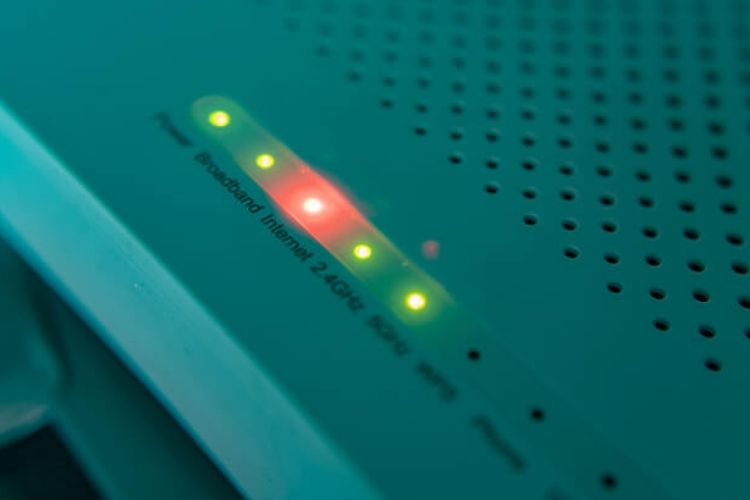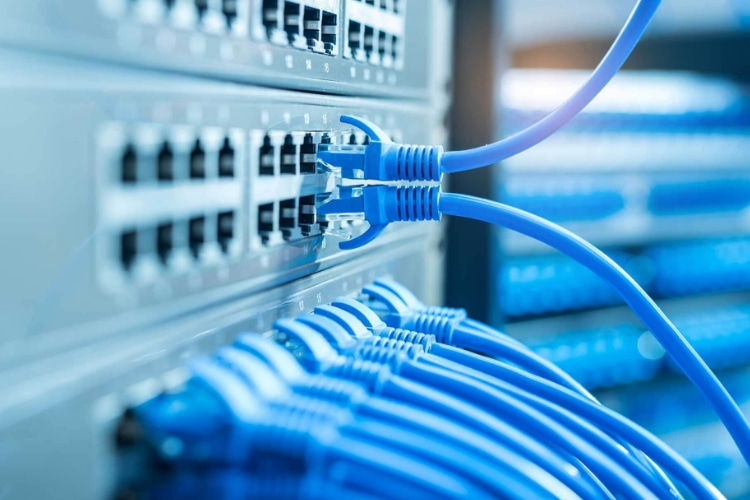You’ve got a new internet installed, switched the power on and all the lights start glittering to announce the start of a new era of super-fast home. But hold on a sec! Is your router optimized to bring out the best of your internet service? Let’s find out.
Your router serves two main purposes. First, to manage the performance of your internet service. Second, to add a layer of security to your home network. Both of these tasks can be optimized if you know the right settings for your router.
Even if you get your internet installed by professionals, they leave your router to default settings, which may not be the best idea.
So read ahead and unleash the power of your router with us!
What We Discovered
- Your router settings determine the performance of your internet service and maintain the security of your home network.
- Personalizing your router settings like SSID, password, and DNS will enhance your network security.
- Follow the below-recommended WiFi router settings:
- Select WPA3 security protocol
- Disable the WAN setting
- Set up QoS configuration
- Choose a 2.4 GHz frequency for seamless connectivity
- Choose a 5 GHz frequency for extensive internet usage
- Change your DNS server and SSID name
- Set up a strong WiFi password
- Set up a guest network
- Enable automatic updates
How to Optimize Your WiFi Router?
To get the best performance out of your WiFi router, here are a few settings that would help. But first, make sure you have a good router modem combo for best results.
Place your router in an optimal position
The first thing you need to do when setting up a new router is to optimize its placement for maximum signal strength. Walls or furniture may affect how well signals travel within your home. Find a spot that is clear and accessible and is a center point for signals to be evenly distributed all around your home. Ensure there is enough open space around your router so signals are not obstructed.
If you or anyone at home engages in intensive online activity that they like to do from a certain room, make sure you install your router near that room for maximum signal strength. You can also test your internet speed to make sure you are getting the promised speed.
Some providers send in professionals to install your router for you. They may help you examine the perfect location for your router.
Select the WPA2 Security Protocol
WiFi-protected access (WPA) is a security protocol that encrypts your data and ensures a secure connection. The most updated version of a WPA currently is WPA3, which employs one of the strongest encryption methods for your data. Routers on WEP (Wired Equivalent Privacy) settings are more vulnerable to attacks and it is recommended to disable this setting entirely. Simply choose the WPA3 setting for total protection.
Set up quality of service (QoS) configuration
Did you know you could get more bandwidth for online activities that you regularly need the internet for? By prioritizing apps or websites that you use every day, you can focus the strength of your internet on activities that matter. Quality of service (QoS) settings help you do just that. On your router settings, go to traffic monitoring and turn on QoS. Then select the apps or websites you need a focused connection for.
However, you might experience slower speeds when browsing or using apps and websites that you did not list on the QoS settings. So make sure to use this setting smartly.
Choose a WiFi frequency to match your internet requirement
Modern WiFi 5 or WiFi 6 routers have the option to choose between a 2.4 GHz and a 5 GHz frequency band. While the 2.4 GHz band has a wider range, the 5 GHz band offers higher speed.
If you need the internet for low-intensity tasks like surfing, sending emails, or browsing social media, you can set up your frequency to 2.4 GHz. On the other hand, if you use the internet for HD streaming, online gaming, or working from home where you are required to upload and download heavy files, a 5 GHz frequency will do it for you!
Router Settings for Added Security
Once you have worked out settings that enhance the performance of your home network, you need to check if your security protocols are in place as well.
Set up a Unique SSID and Password
Your network name helps you identify your home internet and connect to it. We recommend you change the default name and password set up by your provider as it may be something common and could easily be guessed by your neighbors. And you don’t want your bandwidth divided by extra users hoping on to your connection.
Try setting up a unique name and password, which may not easily be guessed.

Change your router’s DNS server
Just as we change our home WiFi network’s name for identification purposes, internet servers detect our network through the IP address. The IP address is a unique identifier of our network, also called a Domain Name System (DNS), and connects us to the world online.
When you install a new router, you can change your DNS server through an online DNS provider to add a layer of privacy and security to your network.
Disable WAN Admin Access
A wide area network (WAN) allows an admin to remotely access your internet. This may not be the safest setting for your home network. Hackers usually exploit this setting to get access to your network and compromise your privacy and security. To make sure only known users can connect to your internet, it is best to disable WAN access.
Set Up a Guest Network
Not all routers have the option to set up guest networks. However, if your router allows, it is best to set up a guest network with a dedicated password for anyone you don’t want to offer your password to.
In addition, you can also use your guest network to connect your home security devices like your cameras. In case someone tries to hack into your network through a device, your personal information will remain safe and protected.
Enable Automatic Updates
With technology evolving now and then, most AI-powered devices can self-update to newer software. Your router also has firmware that regularly updates unless you turn off automatic updates. To avoid compromising your security, make sure you have turned on automatic updates on your router so you always have the most updated security for your home network.
Ready, Set, Go!
These basic settings will help you get the best out of your home internet connection. Just a little personalization and security measures will help you optimize your network, boost your internet speed, and enhance your online security. Ready to upgrade your internet? Let’s get talking!
Frequently Asked Questions
What are the best WiFi router settings? ![faq arrow icon]()
The recommended WiFi settings are:
- Select WPA3 security protocol
- Disable the WAN setting
- Set up QoS configuration
- Choose a 2.4 GHz frequency for seamless connectivity
- Choose a 5 GHz frequency for extensive internet usage
- Change your DNS server and SSID name
- Set up a strong WiFi password
- Set up a guest network
- Enable automatic updates
What is the best WPA setting? ![faq arrow icon]()
WPA3 is the latest security protocol, which offers the most updated and strongest encryption technology for maximum security.
How to make your WiFi router faster? ![faq arrow icon]()
You can make your WiFi router faster by following these steps:
- Choose the best spot for your WiFi router
- Adjust your router’s antennas for maximum signals
- Choose a suitable WiFi frequency band
- Disconnect unnecessary devices
- Use a WiFi extender or booster
Table of content
Detailed Provider Comparisons
Free On-Call Consultation
Top Internet Deals
Recent Articles
How to Speed Up Cable Internet?
Discover ways to optimize and improve the performance of your cable internet as recommended by industry experts
Read moreBest Modem for Cable Internet - Complete Guide
Check out our list of best modems for cable internet for optimized internet performance
Read moreWhat is Cable Internet & How is it Different from Others?
Discover all about cable internet and learn how it compares to other connection types
Read moreBest Modem-Router Combos for Cable Internet
Check out our roundup of the best modem-router combos for cable internet for better and solid internet performance
Read moreTable of Content





